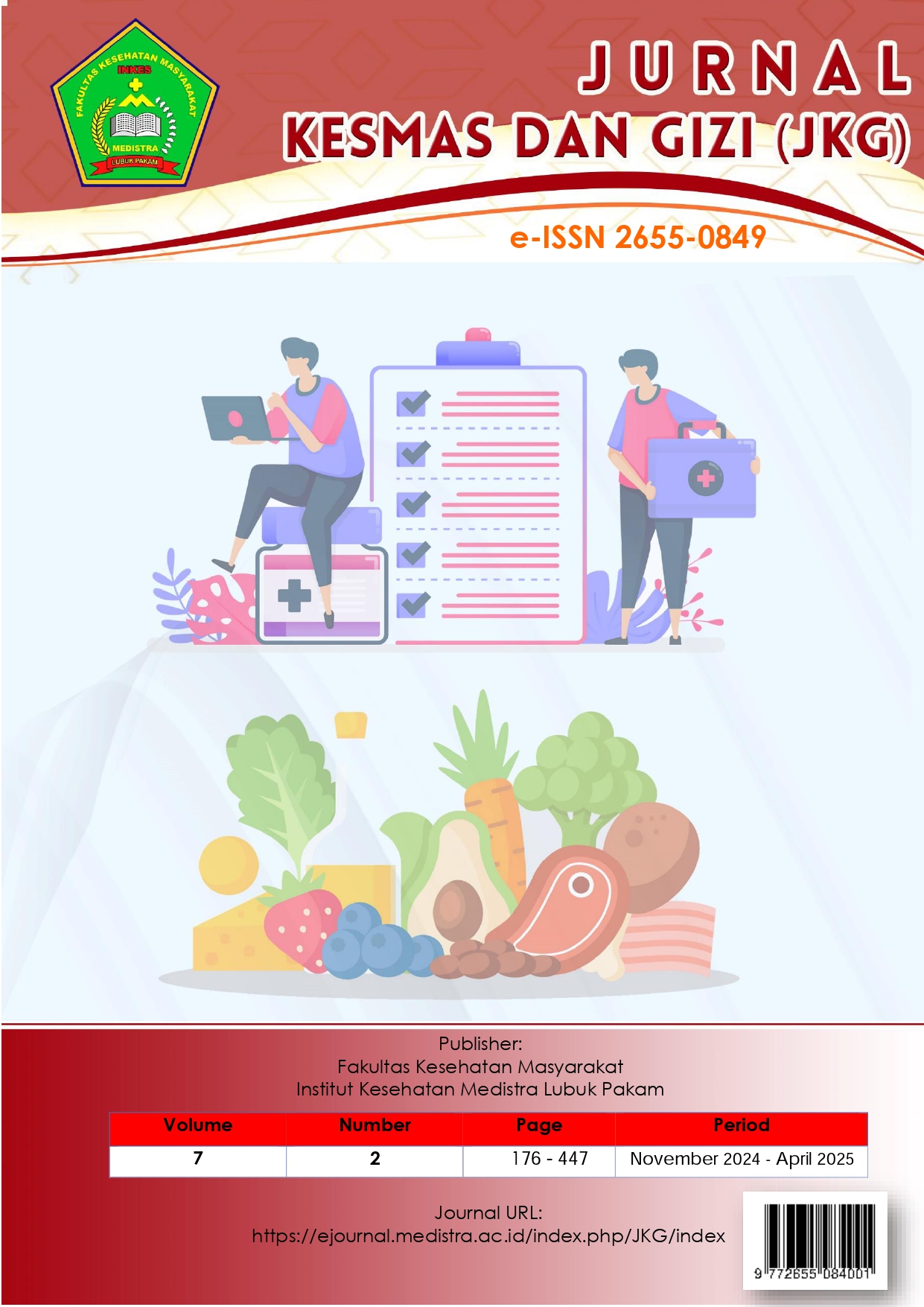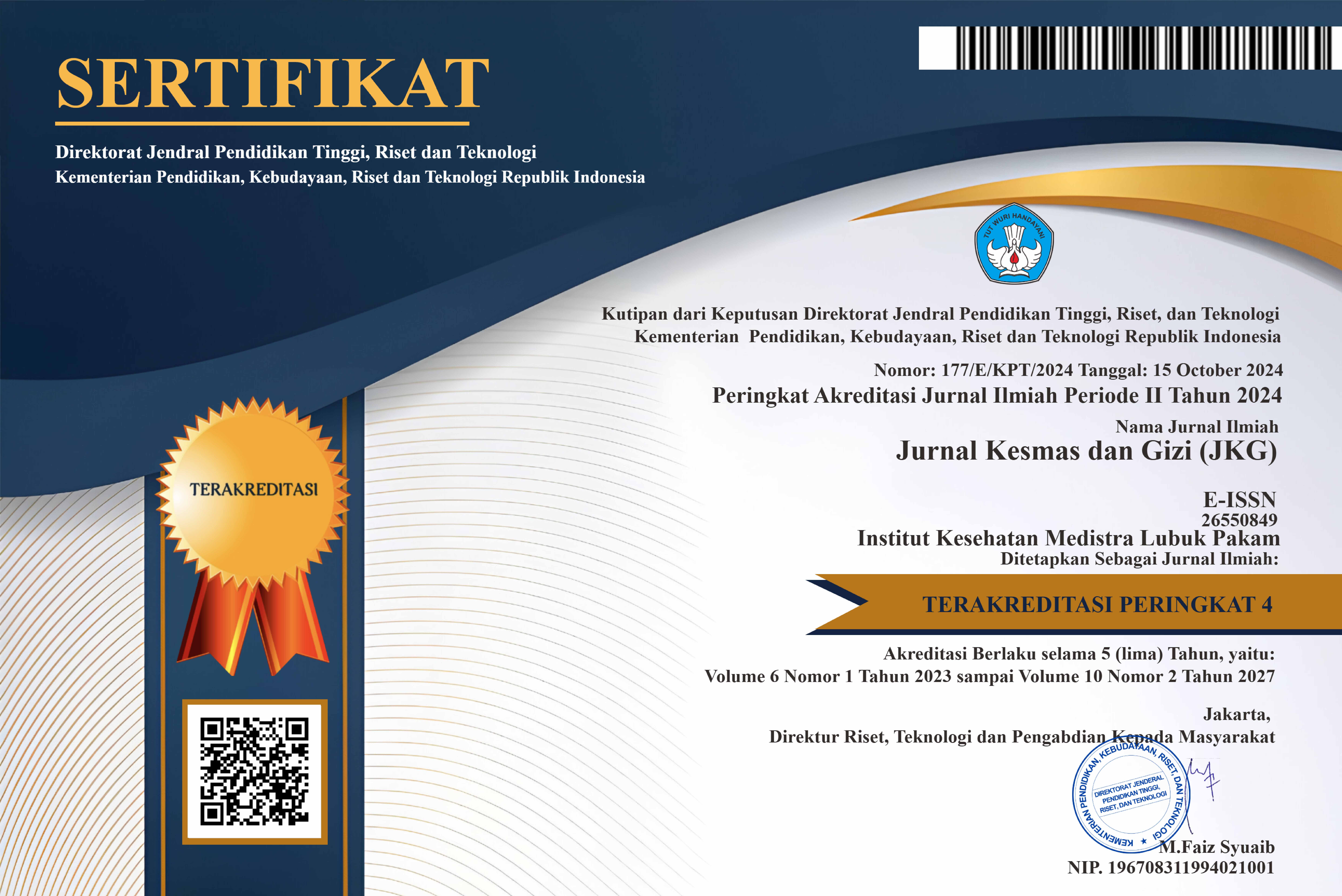The Impact of Adverse Drug Reaction (ADR) Monitoring Systems on Enhancing Drug Safety
DOI:
https://doi.org/10.35451/q8zbdw10Keywords:
Adverse Drug Reactions, Antibiotics, Patient SafetyAbstract
Background: Adverse drug reactions (ADRs) are a serious concern in drug use, potentially endangering patient safety if not properly monitored. Objective: This study aimed to determine the incidence of ADRs and identify the drugs causing ADRs among hospitalized patients at RSUD Drs. H. Amri Tambunan, Deli Serdang Regency. Research Methods: a descriptive non-experimental study with a retrospective approach was conducted. Data were collected from medical records between September 2022 and February 2023. Analysis was performed descriptively using the Naranjo scale. Results: a total of 139 suspected ADR cases were identified. Based on the Naranjo scale, 1 case (0.72%) was definite, 86 cases (61.87%) were probable, and 52 cases (37.41%) were possible ADRs. Antibiotics (61.87%) were the most common drug class causing ADRs, with ciprofloxacin and levofloxacin being the main drugs. The most common ADR manifestation was redness (23.74%). Dexamethasone (41.73%) was the most frequently administered medication to treat ADRs. Conclusion: The incidence of ADRs at RSUD Drs. H. Amri Tambunan remains relatively high, predominantly linked to antibiotic use. Strengthening the adverse drug reaction monitoring system through enhanced reporting, healthcare worker training, and regular antibiotic use evaluations is crucial to improving patient safety.
Downloads
References
Peraturan Menteri Kesehatan RI. Peraturan Menteri Kesehatan Republik Indonesia Nomor 72 Tahun 2016 tentang : Standar Pelayanan Kefarmasian di Rumah Sakit. 72 Indonesia; 2016.
Herlambang S. Manajemen Pelayanan Kesehatan Rumah Sakit. Yoyakarta: Gosyen Publishing; 2016.
Badan POM RI. Pedoman Monitoring Efek Samping Obat (MESO) Bagi Tenaga Kesehatan. Jakarta; 2012.
Rahmawati Y, Sunarti S. Permasalahan Pemberian Obat pada Pasien Geriatri di Ruang Perawatan RSUD Saiful Anwar Malang. Jurnal Kedokteran Brawijaya. 2014;28(2):141–5.
Badan Pengawas Obat dan Makanan. Modul Farmakovigilans Bagi Tenaga Profesional Kesehatan. 2020. 1–72 p.
Doherty MJ. Algorithms for assessing the probability of an Adverse Drug Reaction. Respiratory Medicine CME. 2009;2(2):63–7.
WHO. Pharmacovigilance: ensuring the safe use of medicines. Geneva: WHO; 2004.
BPOM RI. Pedoman Farmakovigilans bagi Tenaga Kesehatan. Jakarta: BPOM; 2017.
Raini M. Antibiotik Golongan Fluorokuinolon: Manfaat dan Kerugian. Media Litbangkes. 2016;26(3):163–74.
Hardiana I, et al. Evaluasi Penggunaan Antibiotika pada Pasien Pneumonia. Majalah Farmasi dan Farmakologi. 2021;25(1):1–6.
WHO. Fluoroquinolone antibiotics: restrictions and warnings. WHO News. 2018.
Solensky R. Hypersensitivity reactions to beta-lactam antibiotics. Clin Rev Allergy Immunol. 2003;24(3):201–20.
Patel TK, et al. Adverse drug reactions related to antibiotic use. Int J Basic Clin Pharmacol. 2020;9(2):250–7.
Barnes PJ. How corticosteroids control inflammation. Chest. 2006;130(1):259–65.
Van Staa TP, et al. Use of oral corticosteroids and risk of fractures. J Bone Miner Res. 2000;15(6):993–1000.
Solensky R. Drug allergy: desensitization and treatment. Immunol Allergy Clin North Am. 2014;34(3):635–47.
Classen DC, et al. Patient safety and adverse drug events. N Engl J Med. 2017;376(5):498–500.
Naranjo CA, et al. A method for estimating the probability of adverse drug reactions. Clin Pharmacol Ther. 1981;30(2):239–45.
Kemenkes RI. Modul Farmakovigilans bagi Tenaga Kesehatan. Jakarta: Kemenkes RI; 2020.
Formica D, et al. Hospital pharmacovigilance improvement strategies. Br J Clin Pharmacol. 2018;84(9):2064–71.
CDC. Core Elements of Hospital Antibiotic Stewardship Programs. Atlanta: CDC; 2019.
WHO. Global action plan on antimicrobial resistance. Geneva: WHO; 2015.
Bates DW, et al. The impact of computerized physician order entry on medication error prevention. J Am Med Inform Assoc. 1999;6(4):313–21.
Radley DC, et al. Effect of CPOE on adverse drug events. J Am Med Inform Assoc. 2013;20(5):844–50.
Sammer CE, et al. What is patient safety culture? J Nurs Scholarsh. 2010;42(2):156–65.
Runciman WB, et al. Safety and ethics in healthcare: a guide to getting it right. Ashgate Publishing; 2007.
Downloads
Published
Issue
Section
License
Copyright (c) 2025 Samran

This work is licensed under a Creative Commons Attribution 4.0 International License.
Copyright in each article is the property of the Author.


























